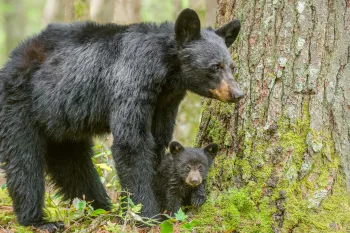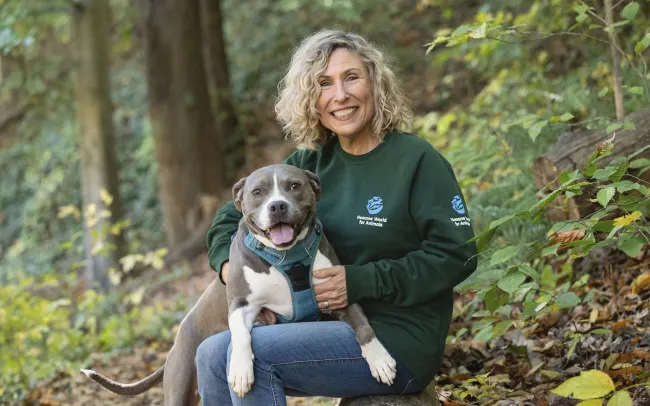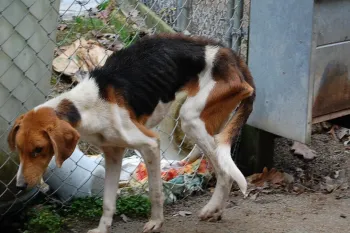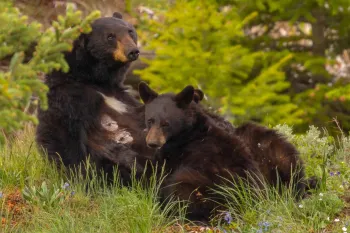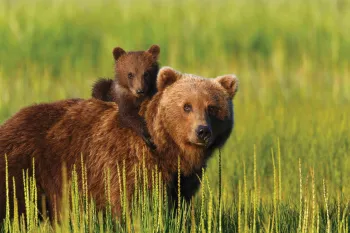Right now, across the U.S. and Canada, black bears are preparing for hibernation by consuming 20,000 calories each day. This feeding frenzy is essential for their survival during the winter months, especially for mother bears planning to hibernate with cubs who need added fat to survive the cold and to grow. Dedicated and family-oriented, black bear mothers will spend up to two years patiently raising, provisioning and forming close social attachments with their cubs. Black bears are also remarkably intelligent and emotionally complex, capable of feeling pain, fear and distress.
Anyone who understands these facts will be appalled to learn that it is often in the fall, as bears are preparing for their particularly vulnerable winter months, when many U.S. states allow them to be subjected to trophy hunting, baiting and hounding.
An eye-opening new report by Humane World for Animals lifts the curtain on the practice of bear trophy hunting, which killed more than 1 million bears in the U.S. between 2000 and 2024. These numbers do not account for an unknown number of dependent cubs who have died because trophy hunters killed their mothers.
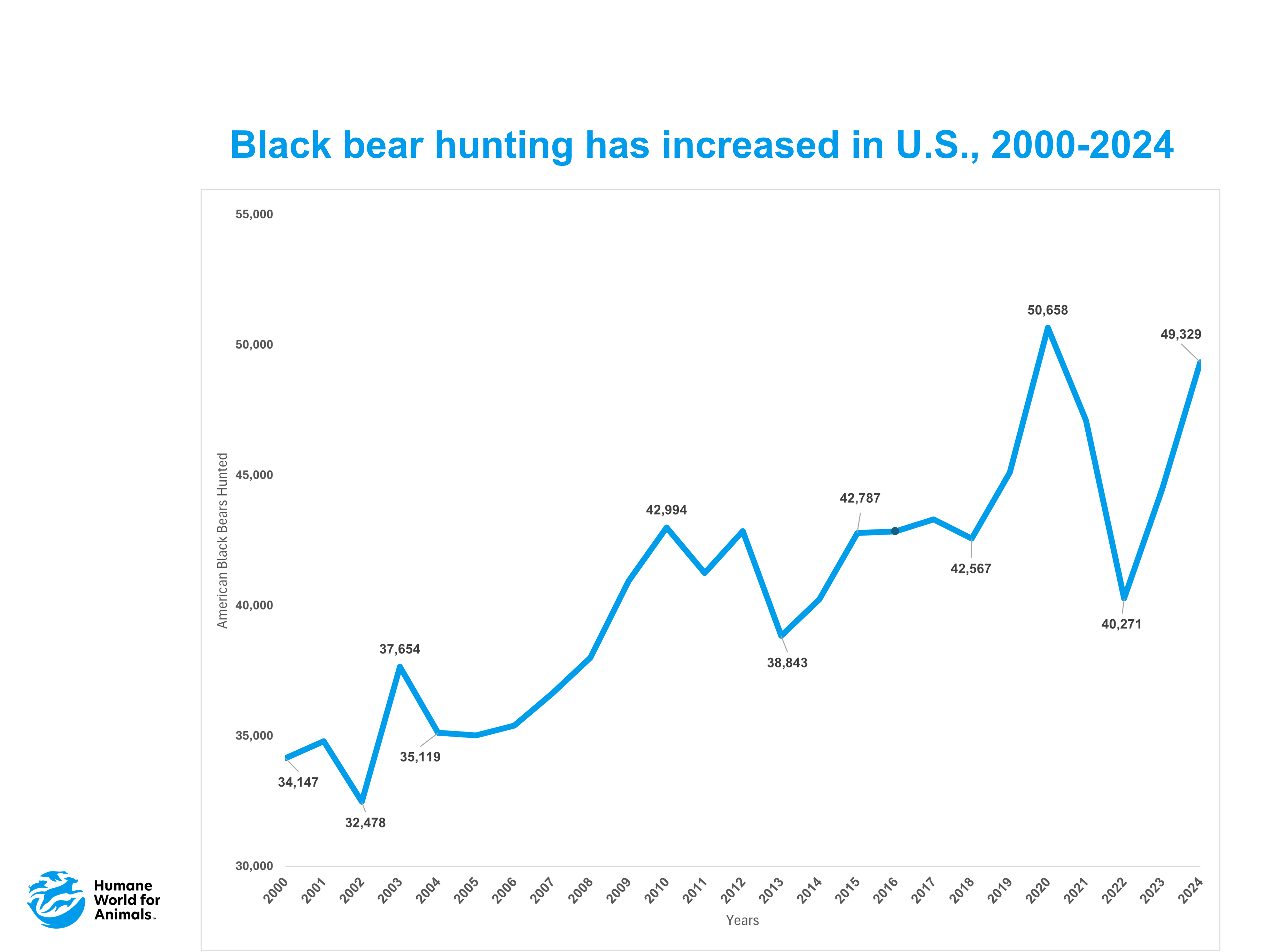
Humane World for Animals
Proponents of bear hunting often try to justify it by claiming that bear populations and instances of human-bear conflict would be out of control were it not for lethal wildlife “management” programs. But decades of research and experience have shown that the primary drivers of these encounters are unsecured human food sources—especially garbage, bird feeders, pet food and compost piles. In semirural and exurban areas, poorly protected chicken coops and beehives also serve as enticing attractants. When bears access these easy food sources, they quickly learn to associate human settlements with meals, increasing the likelihood of repeated visits and escalating interactions. The indiscriminate trophy hunting of bears does not address the root causes of human-bear conflicts. In fact, hunting may remove non-problematic individuals while leaving food-conditioned bears behind, further undermining public safety and conservation goals.
Bear hunting goes against the grain with respect to other hunting trends: While the numbers of hunters have declined in the U.S. over the past two decades, in contrast bear hunting is on the increase. In 2000, 34,000 bears were hunted, compared with 51,000 bears hunted in 2023, the deadliest year for bears during the period 2000-2024.

Humane World for Animals
Certain states stand out for particularly high kill rates. Over the 25 years, Wisconsin, Pennsylvania and Maine each accounted for more than 80,000 bear deaths, with North Carolina, Minnesota, Alaska and Idaho each exceeding 65,000.
Despite small black bear populations because of habitat loss and human persecution, Southeastern states are now lining up to put them in the crosshairs, too. In 2021, Missouri opened a bear hunt over the strong objections of the state’s residents, and Louisiana followed suit in 2024. And in August 2025 the Florida Fish and Wildlife Conservation Commission announced it will open a bear hunt starting this December—even as it conceded that there are drastically fewer bears in one subpopulation than anticipated.
Despite increases in black bear trophy hunting throughout the country, polls have shown that 76% of American voters oppose it. State-specific polls in Florida, Alaska and California show similar levels of opposition to bear trophy hunting and the cruelest killing methods.
Many states permit cruel killing methods such as baiting bears using piles of sugary, toxic or rotting foods; unleashing packs of radio-collared hounds to chase them for miles; shooting them with arrows that cause slow and agonizing deaths and killing them during the vulnerable spring season when mothers are nursing cubs and emerging from months of hibernation. The ubiquitousness of this cruelty is nearly as shocking as the sheer volume of bears killed annually, and it’s hard to reconcile with the fact that most Americans want black bears protected.
Wildlife agencies often wrongly presume that an increase in human-bear conflicts is a result of a growing bear population, but bears may simply be modifying their behaviors to seek out easy food sources, especially if they are losing natural habitat or nutrition sources. The root cause of human-bear conflicts—food attractants—can be prevented through the use of trash bins with self-locking lids, electric fencing and deterrent devices to protect farm animals and beehives, and other simple, commonsense strategies to keep bears away from human neighborhoods and property.
To protect black bears and promote coexistence, states must invest in science-based, nonlethal management strategies and community education. A humane, proactive approach not only reduces conflicts but also reflects the values of a society that respects wildlife and prioritizes coexistence. Such respect is essential for the humane world we are trying to create.
Kitty Block is president and CEO of Humane World for Animals. Follow Kitty Block on X.
